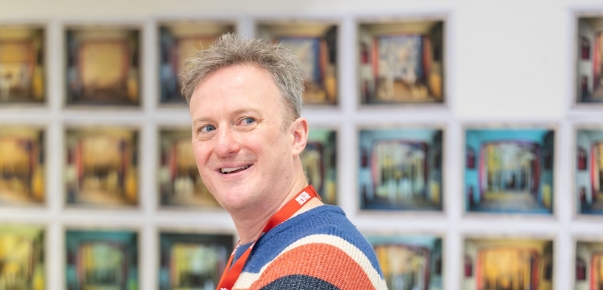Touching the Void | Rehearsal Diary - Week 3
23 Aug 2018After two intense weeks of Touching the Void rehearsals behind us, Assistant Director Evan Lordan gives us a Week 3 glimpse into the preparations going on for the grand opening this September.

Climbing is not simply climbing; there are differing aesthetics, styles and practicalities. The type of climbing being researched for Touching the Voidis often referred to as Alpine style, which is mountaineering in a self-sufficient manner, thereby carrying all of one's food, shelter, equipment, etc. as one climbs, as opposed to expedition style (or siege style) climbing, which involves setting up a fixed line of stocked camps on the mountain which can be accessed at one's leisure. Alpine is seen as a purer sort of climbing when compared to siege climbing, where you might leave ropes fixed to the side of the mountain and discard oxygen tanks etc. In Alpine style, you ascend the mountain attempting to take the path a drop of water would take if it fell from the summit (direct, in other words), leaving as little trace behind you as possible. The purest form that Alpine style can take is to climb a route that has never been done before, carrying as little as possible, in winter and alone.
To help us understand physically and mentally just what that means, this week, our climbing guide Dave Talbot rocked up to rehearsals and proceeded to scare the living daylights out of us by showing us the ridiculous techniques and equipment used to keep people who climb thousands of meters up from falling back down again. Dave has pedigree, having climbed and skied the north face of Elbrus, 5642 meters – the highest mountain in Europe, as well as El Capitan in Yosemite. The software update is likely as close as I’ll ever get to the summit of that or any other mountain.
While he had quite a bit of kit, some bits of it seem ridiculously flimsy and others like some sort of sick joke. I’ll give you an example: Dave showed us a piece of equipment which was simply a hook that you can rest directly on top of a ledge that's only few millimetres deep. You can apparently trust this to support your full body weight, but just in case, he had added an extra safety feature, a bit of blue-tac to keep it from slipping off the aforementioned millimetre deep ledge. The main thing that we learned was that climbers are absolutely out of their minds. To be fair, that’s a pretty important piece of information for the actors' character development.
He had quite a bit of nifty kit too, ropes, carabiners (quick draws AND screw gates!), pitons, crampons, ice screws, snow stakes, ice axes, belay devices, climbing helmets, harnesses and more. All of which needs to be carried by each climber as they go, with weight kept to a bare minimum meaning climbers need to make life or death decisions before they even touch the rock about what they bring or leave behind.
The story of Joe Simpson and Simon Yates in Touching the Void cannot be separated from this ideal, alpine climbing. Together, they were attempting a new route on Siula Grande in the Peruvian Andes belaying each other as they went. Belaying? Oh you know, a technique climbers use to exert tension on a climbing rope so that if one climber falls they will be caught by the person on the other end of the rope. Andrew Greig (no relation to our writer, David Greig) wrote a brilliant book about climbing from the perspective of an armchair mountaineer called Summit Fever. He has a much more beautiful description for belaying; “we rope up at the Cave, tying our fates together for the day. A gesture of trust and solidarity, marriage by a 40-foot length of polypropylene.”
Not all marriages have a fairy tale ending.
Evan Lordan is a Leverhulme Arts Scholar and recipient of a JMK regional bursary funded by the Leverhulme Trust Arts Scholarships Fund.
This September, our radical Year of Change continues with the world-premiere stage adaptation of Touching The Void. For more information and to book tickets, click here.


